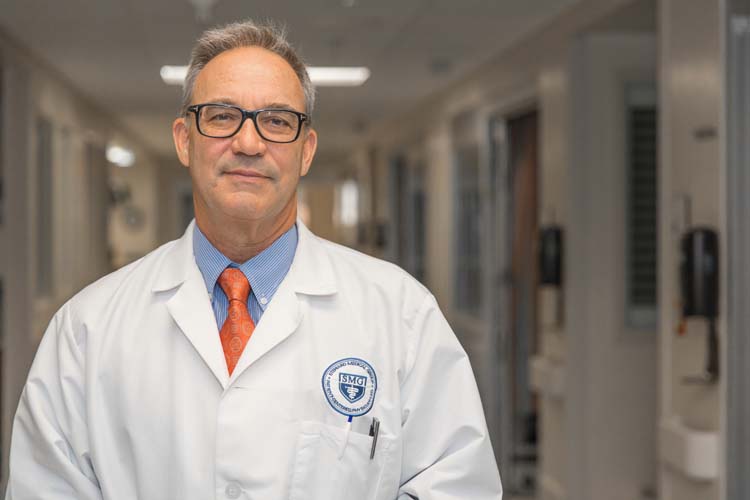
If you suffer from asthma you are far from alone.
The Centers for Disease Control and Prevention says upward of 26 million Americans have this disease and those numbers appear to be rising rapidly.
Perhaps worse, the CDC admits, “we don’t know why” those numbers are climbing so much and so fast.
Dr. Michael A. Layton of Riverside Pulmonary and Internal Medicine and the Sebastian River Medical Center doesn’t have the answer as to why asthma cases are becoming more common. But he does have a new and startlingly effective treatment for those with severe asthma who don’t respond well to medication.
That treatment is called “Bronchial Thermoplasty” and it just might be a real live, honest-to-goodness lifesaver.
“We are the first hospital on the Treasure Coast to provide this service,” Layton beams. “There are service centers in Orlando and physicians in Fort Lauderdale and maybe one in Jupiter, and then as far north as Jacksonville, but we are the only provider hospital” for bronchial thermoplasty on the Treasure Coast.
Layton quickly adds, “We’ve been doing this here now for at least three or four months.” He briefly pauses checking his mental calendar and almost bashfully admits, “probably a little longer than that.”
What exactly is bronchial thermoplasty, and why is it so exciting?
It’s exciting because, as the Mayo Clinic reports, “serious asthma attacks mean you’re likely to need multiple trips to the emergency room over the course of your life,” and “a very severe asthma attack can lead to respiratory arrest and death.”
The CDC calls asthma a lifelong disease that can severely limit quality of life – or even worse – put an end to that life.
The National Institutes of Health agrees, calling asthma “a chronic lung disease that inflames and narrows the airways.” While prescribed medications such as corticosteroids can often relieve that inflammation, they don’t always work for everyone.
Bronchial thermoplasty is also exciting because of the results it has produced.
According to Layton, “79 percent of people [nationwide] who have the procedures done report an increased quality of life from their asthma.”
Want more numbers? Layton has them.
“There is an 84 percent reduction in the need [for patients] to go to the emergency room” with breathing problems after undergoing the procedures, explains Layton. And “there is a 66 percent reduction in days lost from work or the activities of daily life by using bronchial thermoplasty.”
Even five years after having the procedures, Layton points out, “there is a 34 percent reduction in severe asthma exacerbations.”
How does it manage that?
In a bare-bones description, bronchial thermoplasty uses radio frequency-generated heat, delivered through a highly specialized bronchoscope and catheter, to reduce the smooth muscle mass of the airways inside the lungs. That, in turn, opens up airways and allows freer, easier breathing.
Once deemed “experimental” by some insurers, bronchial thermoplasty now enjoys both the FDA’s and Medicare’s seal of approval as well as that of most insurance companies.
Bronchial thermoplasty, Layton explains, is performed in “three different procedures and they are normally three weeks apart. When we do the procedure, we are going to apply thermal energy to the airways. Anything that stimulates airways has the potential to cause problems, so we only do a part of the lung at any one time. We do about a third the first time,” specifically the right lower lung. “The second time we do the left lower lung, and the third time we do both upper lobes.”
Asked why all three sessions aren’t rolled into one, Layton explains, “We do it over three different procedures is because we don’t want somebody to have respiratory compromise and end up having to come [back] into the hospital, so we only do part of the lung at a time.”
Bronchial thermoplasty is not for everyone.
“It’s not for children,” Layton freely admits. “It is only approved for patients who are 18 years of age and above. And, if somebody has a pacemaker or an AICD or a nerve stimulator, they don’t qualify.” In fact, any number of implantable devices may rule someone out.
Still, for any of those 26 million Americans who suffer from asthma and are finding their corticosteroids are not working well enough, a conversation with their primary care physician or an experienced pulmonologist like Layton may open more doors – and airways – and lead to a better quality of life.
Dr. Michael A. Layton is with Riverside Pulmonary and Internal Medicine at 12920 U.S. 1, Suite A in Sebastian. The phone number is 772-388-8322.



